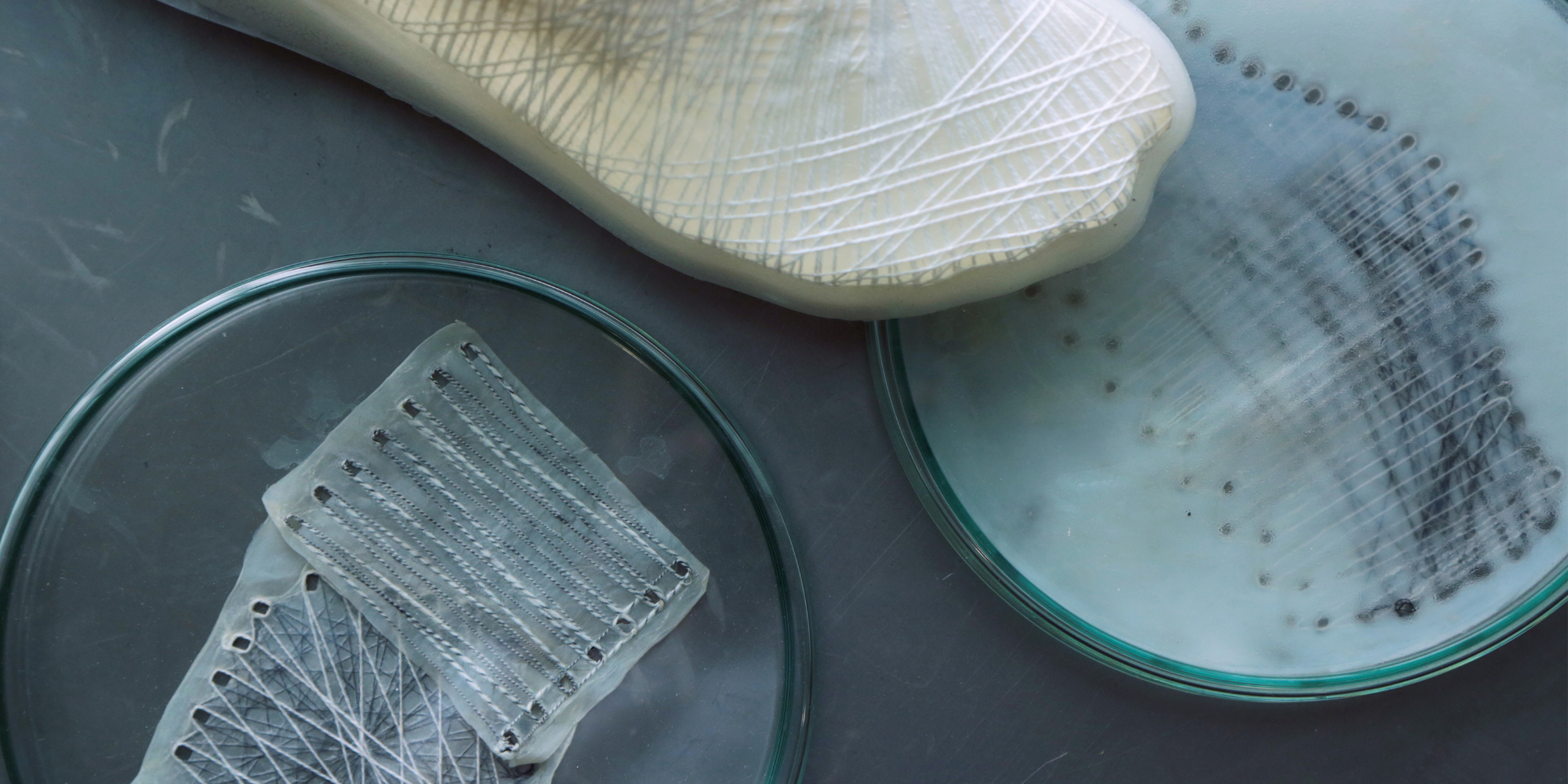Honorary Mention
This is grown. was motivated by a frustration with plastics and a visible disparity between scientific research and design manifestations around natural materials.
Taking an organism-driven approach to material design, the project began under the premise that a greater understanding of nature could help us not just replace the petrochemical based materials of today with more sustainable ones, but perhaps allow us to devise entirely new systems of making and categories of materials previously unimagined. After all, nature has had 3.8 billion years to perfect the ultimate circular economy: Life. Maybe we can still learn something.
Introduced to bacterial cellulose by scientists at Imperial College London who are studying the material and the bacteria that produce it, I was inspired not only by its material qualities but the way it is grown. Learning from the biologists and material scientists, I cultured the bacteria myself, and crafted new tools to manipulate its natural growing process, eventually employing it in a new form of textile creation I call ‘microbial weaving.’
In the context of traditional weaving, I am weaving the warp and the bacteria grow the weft. This allows for the potential to weave patterns not possible with traditional weaving and engineer the material strength in multiple directions. Incredibly lightweight, transparent, and rivaling its synthetic counterparts in tensile strength, the hybrid material created also offers huge potential for customization and application in numerous industries from high performance composites to biomedical applications.
I grew the upper of a shoe to show how this material process could affect the way we design and make things in the future. Nature doesn’t make materials in sheets and cut them for assembly. It makes only as required. Therefore the upper was designed and grown in a single piece with no sewing; one continuous yarn held in place by the cellulose produced by the bacteria.
Credits
Project lead, designer: Jen Keane
Footwear design contributor: Markus Westerberg
Biological science advisors:
Dr. Tom Ellis, Reader in Synthetic Genome Engineering, Department of Bioengineering; Marcus Walker, Synthetic Biology Graduate Student, Tom Ellis Lab Imperial College London
Material science advisors:
Dr. Koon-Yang Lee, Senior Lecturer, Department of Aeronautics, Imperial College London
Dr. Martin Hervy, postdoctoral researcher, Department of Aeronautics, Imperial College London
Dr. Juan Hinestroza, Professor of Fiber Science and Apparel Design, Cornell University, NY, USA
Photography: Tom Mannion, Adam Toth, Vita Larvo
Jen Keane (US) is a designer and creative researcher working at the intersection of design and science, technology, and craft. Inspired by notions of sustainability, and a fascination with new digital and biological tools, she is exploring how new technologies could be employed to design a new generation of hybrid materials, and perhaps change our approach to making altogether. A recent graduate of the MA Material Futures program at Central Saint Martins in London UK, Keane worked previously for the German sportswear brand adidas in materials design, development, and innovation strategy. Holding a Bachelor of Science in Fiber Science and Apparel Design from Cornell University, NY, USA she takes a cross-disciplinary approach to material design and believes that a closer dialogue between science, design, and industry is essential in bringing real change to our material value systems and means of production.
Jury Statement
This is grown. is a project by Jen Keane that proposes a groundbreaking solution to our troubled relationship with nature. Working at the intersection of design and research, Keane has transformed her frustration with plastic pollution into an actionable idea for reducing the amount of plastic waste. This is grown. takes an organism-driven approach to material design. Thanks to her learning about bacterial cellulose from scientists at Imperial College London, Keane has been able to culture the bacteria herself. Using new tools to manipulate the natural growth process, she has succeeded in employing it to furnish an unprecedented form of textile creation that she calls “microbial weaving”.
Keane’s multi-disciplinary collaboration with biology, biomaterial science, and mechanical engineering strongly suggests that bio-fabrication technology could become a leading paradigm in 21st century fabrication. Combining technological ability with environmental responsibility in a unique way, This is grown. allows us not only to imagine, but also to shape the future of production. Far more than aesthetic design, the project proposes an end to the damaging cycle of petrochemical-based production and wastage. “After all,” Keane states, “nature has had 3.8 billion years to perfect the ultimate circular economy: Life. Maybe we can still learn something.”



